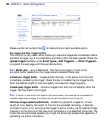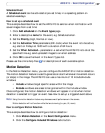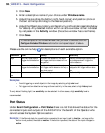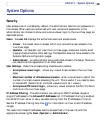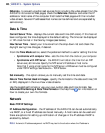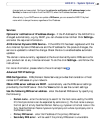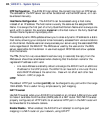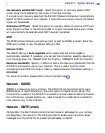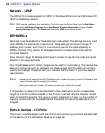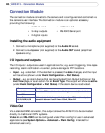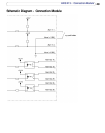
42
AXIS 213 - System Options
NTP Configuration - The AXIS 213 can obtain the correct time from an NTP server.
The address for the NTP server can either be obtained via the DHCP server, or it can
be entered manually.
Host Name Configuration - The AXIS 213 can be accessed using a host name,
instead of an IP address. The host name is usually the same as the assigned DNS
Name. It is always the first part of a Fully Qualified Domain Name and is always one
word, with no period. For example, myserver is the host name in the Fully Qualified
Domain Name myserver.mycompany.com.
The enable dynamic DNS updates allows you to alias a dynamic IP address to a static
host name, allowing your computer to be more easily accessed from various locations
on the Internet. Outside users can always access your server using the associated DNS
name regardless of the WAN IP. The DNS server used by the user and/or the DNS
server responsible for the domain in use must support RFC2136 and allow updates
from the camera.
The TTL (Time To Live) value determines how long (in seconds) the reply from the
DNS server should be remembered when checking that the domain name for the
registered IP address is still valid.
• Link-Local Address is enabled by default and assigns the AXIS 213 with an additional
IP address for the UPnP protocol. The AXIS 213 can have both a Link-Local IP and a
static/DHCP IP address at the same time - these will not affect each other. See
Network - UPnP, on page 44.
HTTP
The default HTTP port number (port 80) can be changed to any port within the range
1024-65535. This is useful for e.g. simple security port mapping.
NAT Traversal
Use NAT traversal when your AXIS 213 is located on an intranet (LAN) and you wish
to make it available from the other (WAN) side of a NAT router. With NAT traversal
properly configured, all HTTP traffic to an external HTTP port in the NAT router will
be forwarded to the network camera.
Enable/Disable - When enabled, the AXIS 213 will attempt to configure port
mapping in a NAT router on your network, using UPnP™.





